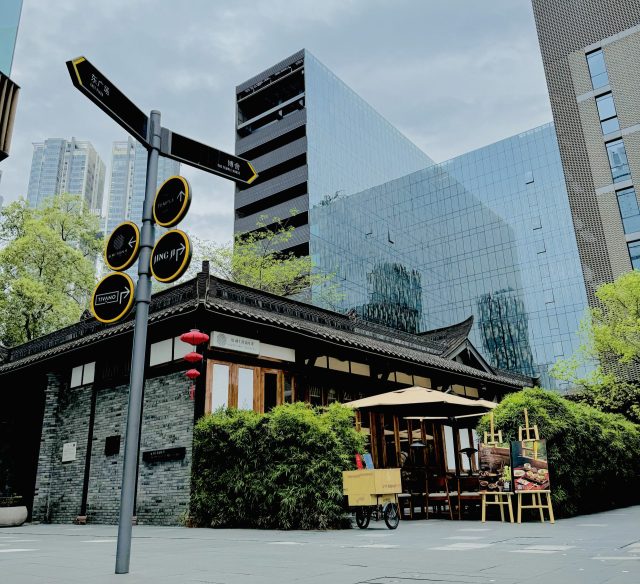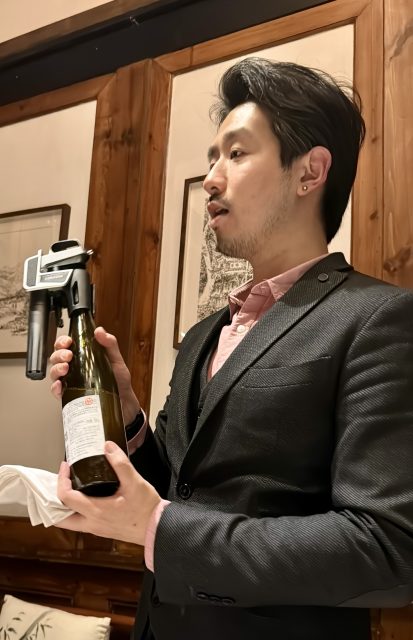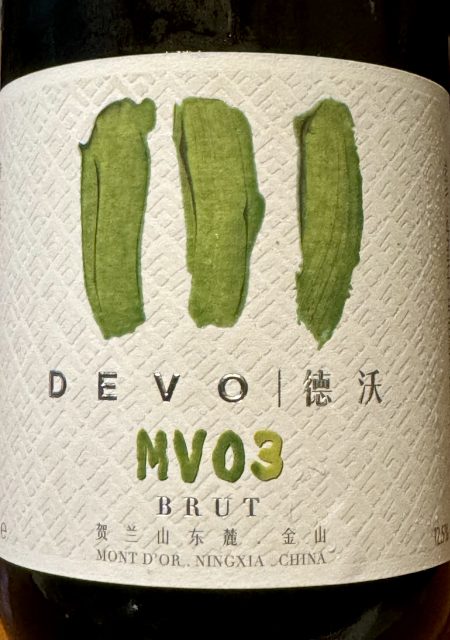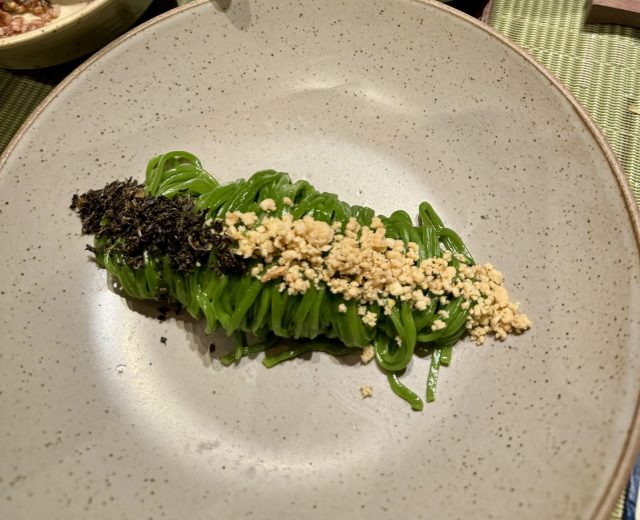This website uses cookies so that we can provide you with the best user experience possible. Cookie information is stored in your browser and performs functions such as recognising you when you return to our website and helping our team to understand which sections of the website you find most interesting and useful.
db Eats: Mi Xun Teahouse at Temple House, Chengdu
Douglas Blyde heads to the Sichuan capital of Chengdu for an afternoon tea with a difference, as resident tea expert Jessie Yang and sommelier Cederic Yao guide him through the drinks, including a “hangover-busting” brew.

“Like a prism focusing the evolving energy and newfound sophistication of modern-day China, The Temple House became Chengdu’s hottest hotel the moment it opened in 2015,” wrote Forbes. This boundary-free, five-star urban resort forms part of a 1,000-year-old complex, “once one of China’s most famous monasteries,” it added, noting, “you can still visit the historical Daci Temple there today.” Awarding it one star, Michelin, which launched their Chengdu edition in 2022 – the same year Louis Vuitton opened their first permanent restaurant in China in this city – praised “hand-picked local ingredients” executed by ever-present executive chef, Tony Xu, whose “light, refined,” vegan dishes include “mapo tofu with chanterelles, and spicy hot pot.”
Design
A branded shopping bag-laden stroll from well-frequented stores, Apple, Burberry, Chanel, Jimmy Choo, Dior, and Jo Malone, which flank a rainbow musical fountain, the tranquil Mi Xun teahouse occupies a restored Qing Dynasty courtyard house at Swire Hotel’s Temple House. Following Hong Kong’s Upper House and Opposite House, Beijing, this House is a key part of the Chengdu Daci Temple Cultural and Commercial Complex, while a fourth property, the Middle House, rises in central Shanghai. Comprising 100 bedrooms and 42 residences, an award-winning spa, the Mi Xun teahouse, and a sweet-smelling Italian restaurant, the scheme was realised by Make Architects – the practice of former Foster and Partners designer, Ken Shuttleworth.
Drinks
Harking from Hunan, Cederic Yao is the earring-sporting House sommelier, whose dream to devour the wine culture of France, where he ran an event pitching Chinese wines against France’s own, was curtailed by the pandemic. “I spent all my money on tasting wine during lockdown in Paris,” he recalls. He previously studied architecture, leading not only to an appreciation of old buildings but also the printed word, including “the smell of ink”, while a course in luxury management taught him “the emotion and values behind a product beyond money.”

Yao took over Temple House’s wine programme from the legendary Cassie Hu, who went on to oversee some 460 bins, including 10% by the glass, at Sun and Cai Wenbin’s fusion eatery, Wine Universe in Chengdu’s Jinjiang district. Options by the glass from the hotel’s leather-bound master list range from Schreckbichl Colterenzio Alto Adige Pinot Grigio, to La Chablisienne’s accurately titled “Pas si Petit” Petit Chablis, both from 2021, and Charles Heidsieck’s Brut Reserve. Sparklers by the bottle reach from Vietti’s joyous, dewy Moscato d’Asti 2020 to Salon Le Mesnil 2007, via Eric Rodez Blanc de Noirs NV, Egly-Ouriet Grand Cru 2009, Pol Roger Cuvée Sir Winston Churchill 2013, and Dom Pérignon 2012.
Picks from regional France include Domaine Baud Côtes du Jura Savagnin 2011, Domaine Huet Clos du Bourg Moelleux 2016, and Pibarnon 2015, while big guns from Burgundy include Gevrey Chambertin Prieure-Roch 2020 Le Clos des Varoilles Monopole 2020, and from Bordeaux, a lot of vintages contain the lucky number eight, such as Angelus 2008, Canon 2008, and Lafite 2018. A notable sweet pour is Rieussec 1997.
In line with Tivano, the hotel’s popular Italian courtyard restaurant beside the pool, Italy is well represented, including top-flight Amarone from Quintarelli (2007), the all-Merlot Super Tuscan, Messorio by Le Macchiole (2009), and, from a strong Nebbiolo selection, Gaja Conteisa Langhe 1996, and 1998 Giovanni Sordo Sori Gabutti Riserva.
From outside Europe, pouting Yankees include 2019 Cabernets by Coup de Foudre and Colgin IX Estate, while from Australia, there is a rested, much sought-after McLaren Vale Syrah from Clarendon Hills (2012), surely a better option than the knock-off “Ben Folds” available at a local store.
Although Chengdu’s climate favours sorghum for Baijiu rather than vitis vinifera for grape wine, Chinese bins from elsewhere include Emma Gao’s organic Silver Heights Sand Lake Moon (2020) from Ningxia’s Helan Mountain, and what is a heritage bottle by Chinese standards, being the Franco-Sino entente, Domaine Franco-Chinois Réserve 2013 Marselan from cooler Hebei.
Offbeat choices, meanwhile, include 2018 Swiss Chasselas, Les Terrasses, by Jean-René Germanier Vétroz, a single vineyard Uruguayan Tannat – Bodega Garzon Maldonado 2018, and Koshu from Suntory.
Overseen by resident tea expert, Jessie Yang, teas are sourced locally; indeed, Mi Xun picks the tips for their own signature blend. While Aqua Panna is available, the almost colourless, pure-seeming, cold-brewed green tea, continuously topped up in Stölzle flute, is much more cleansing – and we are happy to report, apparently hangover-busting…
Replete with soft banquettes, tall, shop-window-like cabinets of dark spirits traditionally favoured by Western guests, whose numbers remain down by 30% compared to pre-pandemic levels, and a prominently displayed “Rotovap”, Jing Ji bar is the go-to for an aperitif, best seized during the three-hour happy “hour”. Drinks by head bartender, Dabai You, include a pepper-infused “Sichuan Mule”, rose-fragranced “Jasmine and Pear” replete with tea-like tension, and, prepared on our visit by Yao, a handsome, pencil shaving scented, “Baijiu Negroni”. The latter starred “abnormal Baijiu brand”, Tabb, devised for mixology, alongside Barolo Chinato, Cinzano, Campari from a jeroboam, and orange bitters.
Dishes
Previously head chef at the city’s Shangri-La outpost, executive chef, Tony Xu, works “with organic farmers in Yunnan to reap excellent quality mushrooms, herbs and vegetables,” he says, including communities set to protect natural habitats of the region’s mascot – the giant panda. This larder is supplemented by “our own herb garden,” he adds.
Alongside coconut and pear, and kumquat and mung bean stuffed tea cakes, artistically set on kitsch-looking, though sharp raspberry powder, dinner opened with two wines generously drawn from Yao’s personal collection. First, poured in chilled glasses, the reductive, creamy, competent MV03 was a preview bottle of the forthcoming cuvée of traditional method sparkling producer, Devo in Jinshan, Yinchuan.

The project’s Champagne-loving owner, Zhai Liang, initially considered acquiring vineyards in France’s most northerly wine region, said Yao, before deciding on fairer-priced sites at home in Ningxia. Being a region largely devoted to still wines, he would also encounter “fewer enemies”. Rather than engaging a preservation device, Yao said such wines “need to be finished – for a chilled life.” Secondly, the third release (2023) from high altitude producer, Zaxee, was “a naughty wine.” With white pear and guava notes, this “un-classic Chardonnay” is crafted some 2,000 metres above sea-level in the Shangri-La vicinity. Its label showed a pair of cherries, “which I originally thought adorable, then realised they were Tibetan scripture,” noted Yao. Of the first release (2021), Yao recalls finishing a sample bottle with three friends “within 15 minutes” such was its sapidity.
The incisive, still Chardonnay continued with a deep-fried yet greaseless clump of natural moss evoking model railway landscaping from the apparently sacred, Changbai mountain woven with just a tingle of Sichuan pepper. This had a Matcha-like aftertaste. A walnut flour-wrapped canister of black cabbage and fermented soybean evoked the subtler scents of Baijiu, while a square of sour Chinese spinach, topped with bright bell pepper, was richer. Next, a plateful of porcini marinated in chilli paste effectively evoked gelatinous pork trotter, working best with the fizz. “Champagne is always the answer,” advised Yao of the style.
Dumplings respectively bulging with steamed white fungus and baby cabbage, and, being particularly sticky, ample black truffle, ensued, followed by a porcini and chestnut soup – which Yao considered best without wine, given matching a liquid with a liquid seems a superfluous challenge.
Following on, we encountered our first vin and yam pairing. With flamboyant, almost Gewurtztraminer notes, The Starting Point Amphora 2018, an unfiltered orange wine from Helan Mountain, Ningxia, certainly fits the hotel’s motto, “house of contrasts”. While it sports a drunken panda on the label at the end of a bamboo wine luge, “That’s not why I chose it,” insisted Yao. Intriguingly, he presented two versions of this wine: one via Coravin, which bore tension and succulence; the other having been decanted for 20 minutes, allowing its flavours to fan out. Of pairing wines and dishes. Yao, who isn’t adverse to politely challenging guests, advised, “it’s not prescriptive; if it’s not good, tell us.” However, the deep-fried yam with a light, silky pumpkin sauce, topped with texture-enhancing, finely chopped pumpkin and pistachio seeds, did dovetail with the rich, rust-coloured wine, as did wok-fried sweet beans topped with caviar-like fried quinoa.
Focusing on wild, fried mushrooms rather than minced beef, and soft, not firm tofu, Xu’s signature braised Ma Po tofu, was spooned over two types of rice, one, steamed from China and the other being a roasted grain from Canada’s highlands. “This will present another challenge for me,” joked Yao, of the fulsome, fiery dish. He headed back to Zaxee, this time to an altitude of 2,560 metres. The utterly blissful, layered, energetic, and complete, 2019 Cabernet Sauvignon was again served in two ways, being ambient to flatter aromatics, and cooler to highlight its structure, leading to a more exciting dialogue betwixt spice and wine. “I believe wines from higher altitudes are lighter and easier to accept,” said Yao of its profile. As with the producer’s calibrated Chardonnay, only 3,000 bottles of this are produced annually.
With handmade spinach noodles spun with chilli oil, Sichuan pepper, and spring onions, Yao returned to the opening curtain, serving the first fizz in amplifying, larger bowled glasses. Sparkling, he said, is “cleansing”, preparing the palate “for the next challenge.”

Finally, Yao went “on mute” when it came to the final dish, given that it was paired with tea, not wine. With a pretty tree sap-enriched sweet, chilled soup with grapefruit segments and fermented glutinous rice “pearls,” Yang served the hotel’s signature blend, which was a bit shocking given that it was the first and last warm beverage.
Last word
Originally intended as a setting to enjoy tea and cakes rather than multi-course menus refined enough to pique Michelin’s interest, Mi Xun subsequently adapted to the requests of its well-heeled guests, including Tibetan monks, to upgrade the offer. Set at the heart of this leafy, often walkable, UNESCO-registered City of Gastronomy, Xu, Yao, and Yang have created a destination in which layered Sichuanese cuisine and modern liquid collaborators are memorably woven.
Best for
- Vegetable-led dishes based on temple classics
- Boutique, grower, Chinese wines
- Teas, including an own blend
Mi Xun Teahouse – The Temple House, 81 Bitieshi Street, Jinjiang, Chengdu, 610021, China; +86 28 6297 4193; teahouse@thetemplehousehotel.com; thetemplehousehotel.com
Related news
Impeachment of South Korean president weighs on soju stocks
Suntory pulls ads from Japan's Fuji TV amid network controversy
Zachys: market sees 'growing confidence' as auction sales top US$63 million

